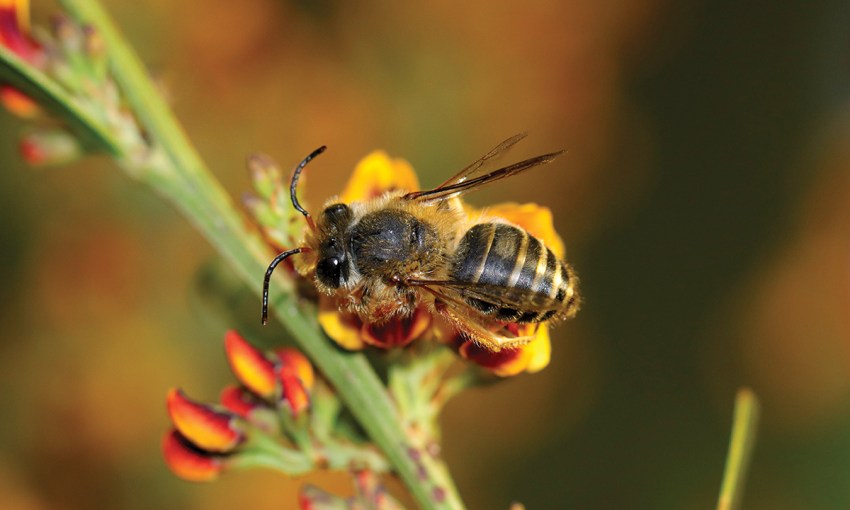Plant some bee food in your garden to attract our great pollinators back into your back yard.
Make your garden first stop on the bee-line
Take time to pause and reflect on the importance of bees. While bees are present in our gardens from the end of winter until well into autumn, relying on our veggies and fruit trees alone to attract the important insects into our back yards won’t always work: they need flowers too.
We asked bee expert, Dr Katja Hogendoorn from the University of Adelaide, about the importance of bees and planting local native flowering plants in our gardens.
Katja explains that through their pollination services, bees contribute to 35 per cent of what we eat.
“People who grow their own fruit and veg will know that without bees, we wouldn’t have tomatoes, zucchini, watermelon, apples, blueberries or cherries, and our strawberries would be malformed,” Katja says.
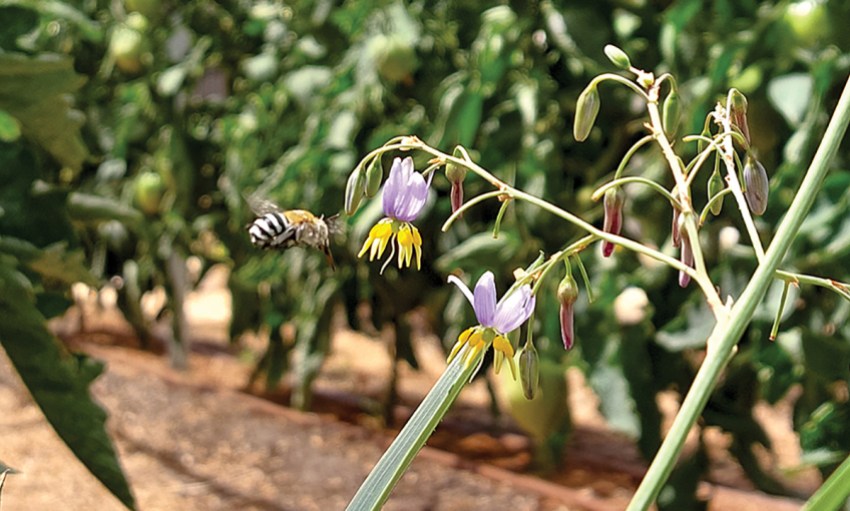
“As the saying goes, ‘Every third bite, thank a pollinator’.”
A common misconception is that there is only one species of bee in the world, in the form of the famous European honey bee. But this is not the case. In fact, there are 20,000 known bee species worldwide and nearly all of them are solitary.
Solitary bees produce their offspring alone in a nest. They don’t have a queen and workers, they don’t live in a hive or make honey. Despite that, their pollination services are just as important as those of the managed honey bees.
“Australia alone has more than 1700 species of bees and many species are still waiting to be discovered,” Katja says.

“The European honey bee was introduced in Australia, initially for honey production from eucalypts and to manage crop pollination. (But), while they’re extremely useful, they’re not native to Australia.”
Having studied bees and pollination for 40 years, Katja is still fascinated by their diversity.
“Bees come in a variety of colours, shapes and sizes, but they have one thing in common – pollen and nectar are their only food source,” Katja says.
“Bees get their protein from pollen and their carbs from nectar, so they can’t exist without flowers.”
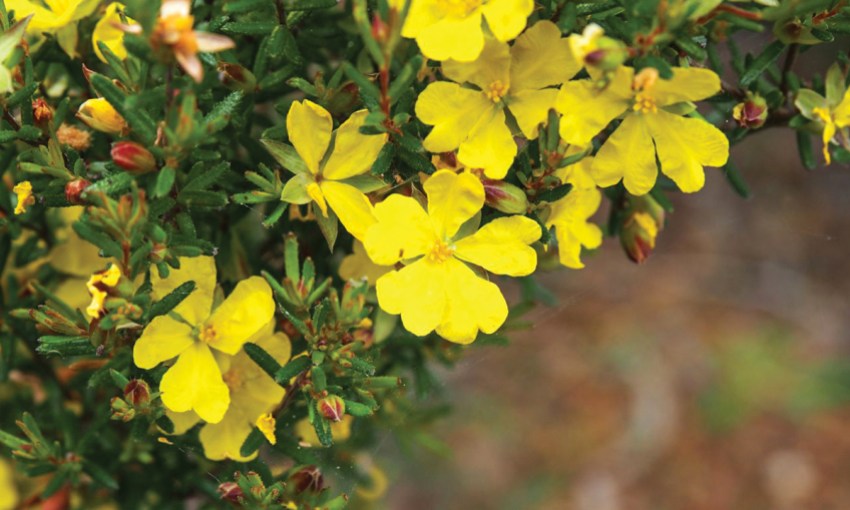
By planting flowering plants in our gardens, we provide food for bees, and in turn, the bees will pollinate our crops, providing us with food.
Sounds like a very good deal, doesn’t it? But what plant species should we choose as our bee-attractors?
“Bees don’t all have the same diet,” Katja says. “Some species, including honey bees, are generalists – they aren’t picky. Native blue-banded bees, for example, will forage on flowers of Australian native plants, but will also visit tomato, English lavender and duranta, which are all introduced species.
“But about three quarters of our native bee species are selective and will only take pollen and nectar from Australian native plant species.
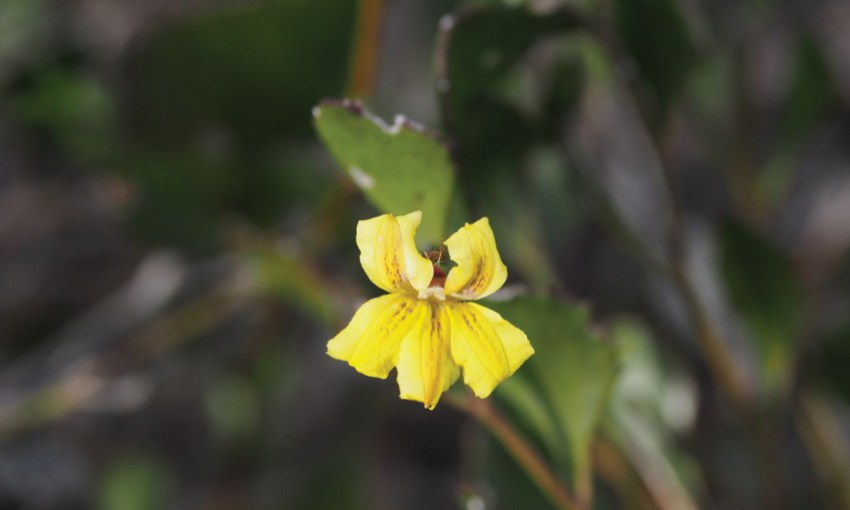
“Several native bees specialise on a narrow group of plants. For example, the gorgeous golden pea bee will forage only on a few native pea species that flower for one month in spring.”
So, to attract bees to your garden, choose local native plants, which will mean you get both generalist bees and the specialist native bee species.
Hardy plants that flower for a long time include fan flowers (scaevola), goodenia, and native blue-bells (wahlenbergia). For buzz pollinating species like blue-banded bees, flax lilies (dianella) and guinea flowers (hibbertia) are good choices.
If you want to attract the specialist golden pea bee, you will need to plant species of bitter peas (daviesia).
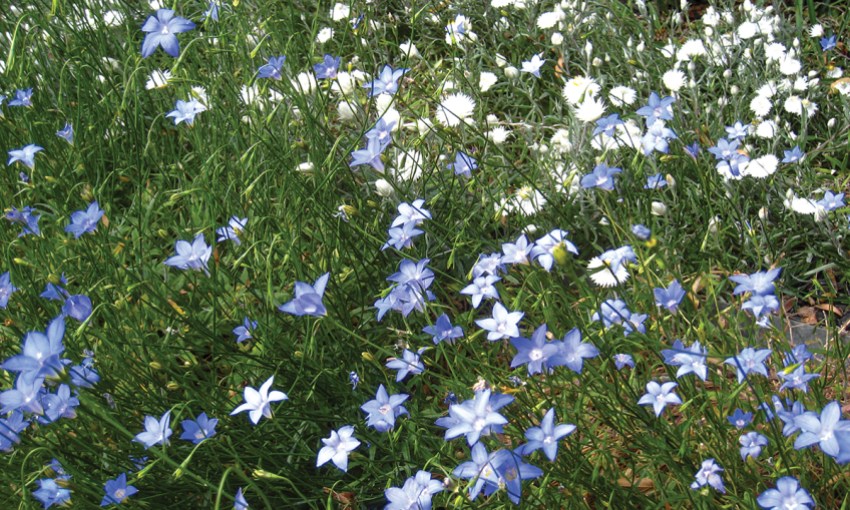
As Katja explains: “I’ve planted several bushes of the narrow-leaf bitter pea (daviesia leptophylla) in my garden. Five years later, I saw my first golden pea bee on the flowers. If you plant the right food plants, the bees will come.”
Discover some garden-worthy natives suited to your region, or speak to your local native plant nursery for more advice about bee-friendly plants local to your area.
This article first appeared in the Autumn 2023 issue of SALIFE Gardens & Outdoor Living magazine.



